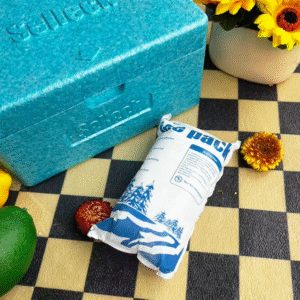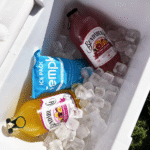Nearby Store Dry Ice Pack: How to Find and Use It for Safe Shipping?
Looking for a reliable way to keep your perishable goods safe during shipping? A nearby store dry ice pack could be your solution. Learn how to find, use, and safely handle dry ice packs to ensure optimal conditions for your shipments. Whether you’re sending food, pharmaceuticals, or biotech samples, this guide has all the details you need.
-
Where to find a nearby store dry ice pack quickly
-
The benefits of dry ice for shipping perishable goods
-
How to safely handle and use dry ice packs
-
Best practices for regulatory compliance in shipping
-
Choosing the best dry ice provider in your area
What Is a Nearby Store Dry Ice Pack, and Why Is It Useful?
A nearby store dry ice pack is a dry ice product available at local retailers such as grocery stores, gas stations, and specialty cold storage providers. Dry ice maintains ultra-low temperatures (−78.5°C) for extended periods, which is essential for shipping temperature-sensitive items like seafood, pharmaceuticals, and scientific samples.
Fun Fact:
Dry ice sublimates directly into gas, leaving no liquid behind, making it more efficient and cleaner than conventional ice for shipping.
Where Can You Find a Nearby Store Dry Ice Pack?
You can find dry ice packs at various places such as:
-
Grocery stores like Walmart, Safeway, and Kroger
-
Gas stations (7-Eleven, Wawa)
-
Industrial suppliers and cold storage warehouses
Tip: Always call ahead or check online to confirm stock availability.
How to Use a Nearby Store Dry Ice Pack Safely
Handling dry ice requires care. Follow these guidelines to ensure safety:
-
Use Proper Containers: Ensure that dry ice is stored in containers with adequate ventilation to prevent CO₂ buildup.
-
Wear Protective Gear: Always handle dry ice with insulated gloves to avoid frostbite.
-
Ventilate the Shipping Area: Avoid airtight containers to prevent dangerous pressure build-up from CO₂ gas.
Best Practices for Shipping with Dry Ice
How Much Dry Ice Should You Use for Shipping?
-
For 24 hours of shipping, use about 1-2 lbs of dry ice per 24-48 hours of transit.
-
Example: When shipping seafood for one day, 2 lbs of dry ice will suffice.
Ensuring Temperature Stability During Transit
-
Layer Dry Ice Properly: Place it at the bottom of the box, ensuring goods don’t touch the ice.
-
Use Insulated Packaging: Insulated containers help prevent temperature fluctuation.
-
Seal and Label Appropriately: Proper sealing and labeling are crucial for regulatory compliance and effective cooling.
| Packaging Material | Advantages | Best Use Case |
|---|---|---|
| Insulated Containers | Keeps the cold in, preventing heat exposure | Long-distance shipments |
| Styrofoam Boxes | Lightweight, cost-effective | Shorter shipments, especially local |
| Vacuum-Sealed Bags | Prevents direct contact with dry ice | Delicate or fragile goods |
Regulatory Compliance for Dry Ice Shipping
Ensure compliance with regulations set by the DOT (Department of Transportation) and IATA (International Air Transport Association):
-
Packaging: Use approved, compliant materials.
-
Labeling: Ensure proper labeling like “Dry Ice” or “Carbon Dioxide, Solid.”
-
Weight Limits: Stay within the allowed weight limits, typically 5.5 kg per package for air transport.
Using Dry Ice for Food Shipping
Dry ice is a popular choice for shipping food, ensuring items like seafood, meat, and frozen meals remain at the required temperature.
Best Practices:
-
Pack in layers and monitor the temperature of shipments using IoT sensors or temperature monitors.
2025 Trends in Dry Ice Shipping
With the increasing focus on sustainability and technological advancements, 2025 will see significant shifts in dry ice usage:
-
Sustainable Solutions: Reusable and biodegradable packaging options will become more widespread.
-
Smart Packaging: Temperature sensors and IoT-driven cold chain solutions will allow for real-time monitoring of shipments.
-
Regulatory Compliance: Stricter international regulations will standardize labeling practices and packaging requirements.
Tip: Stay ahead of trends by opting for smart packaging and sustainable solutions to reduce environmental impact and improve shipping efficiency.
Frequently Asked Questions (FAQs)
Q1: How do I find a nearby store that sells dry ice?
You can easily find dry ice at major grocery stores, gas stations, and local ice companies. Calling ahead or using store locators online can save you time.
Q2: Can I ship food using dry ice?
Yes, dry ice is ideal for shipping perishable food like seafood and frozen goods. Be sure to follow the right packing and labeling guidelines.
Conclusion and Recommendations
Nearby store dry ice packs are essential for ensuring safe, cold-temperature transport for sensitive goods. Follow best practices, stay compliant with shipping regulations, and choose the right dry ice provider for your needs.
Actionable Next Steps:
-
Locate a nearby store with dry ice supplies.
-
Ensure proper packaging to prevent spoilage and maintain the required temperatures.
-
Explore temperature monitoring options for added peace of mind.
About Tempk
At Tempk, we provide state-of-the-art cold chain solutions, including dry ice pack sheets, insulated containers, and temperature-sensitive shipping kits. Our expertise ensures that your shipments maintain optimal temperature control throughout transit.
Ready to ship? Contact Tempk for reliable, professional cold chain solutions.
























